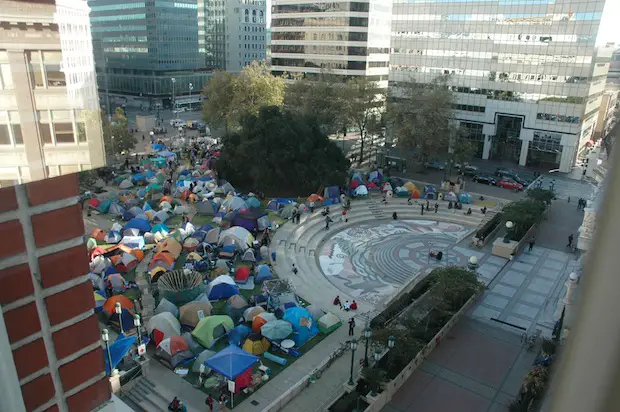The most adept of authors capture our imaginations and place us, vividly if temporarily, in a completely different world. If only for a few hours, our imaginations are transplanted into other minds, other times, other environments, and other spaces. Think of it as easily the most affordable way that you could ever visit the cities you only dream of exploring: how else can you experience the vibrance of Piazza della Signoria in Florence or the grandiosity of Moscow’s Red Square without the nine-hour flight? Considering this, allow me to take you on a brief historical tour through some of the more memorable literary representations of the world’s urban landscapes.
Giovanni Boccaccio’s Il Decameron offers one of the richest opening scenes in all of Medieval literature. Set in Florence amidst the Great Pestilence of the fourteenth century, ten young Florentines, the brigata, meet at the Basilica of Santa Maria Novella. While the scene itself is significant for the purposes of setting out the brigata‘s plan to tell one-hundred stories in ten days, the backdrop of Santa Maria Novella is a striking and appropriate one. Of Florence’s great religious institutions, Santa Maria Novella is the earliest and most representative of Florence’s civic history in a way that the Basilica of Santa Maria del Fiore and its over-the-top opulence never could, showcasing the source of funding and the burial places of the early Florentine elite. The basilica’s more ascetic aesthetic better connects itself to the populace, meaning that, despite the elite status of the brigata, they were nonetheless merely Florentine.
Moving beyond the Medieval era, it would be remiss to neglect the canon of William Shakespeare. Arguably one of the most influential authors from England, a consistent element of Shakespeare’s dramaturgical works is his ability to set the aesthetic sensibilities with such simple set directions, be it a bustling Milanese streetscape or the tranquility of Windsor Park. The opening scene of Titus Andronicus is set ‘before the Capitol’ in Rome, and, immediately, we are drawn into space of grand importance (though, of course, the play is set during the Roman era, so the Capitol is not surrounded by Medieval and Renaissance palaces): the location itself, at the heart of Rome and her empire, underlies not simply the chaos that unfolds over the course of the rest of the play, but also, through the grandeur of the space, the societal importance of the characters involved. Another scene from Richard III (Act I, Scene IV) invokes a place ripe with meaning: set in the Tower of London, the site of countless executions, the gruesome plot to murder Clarence is given a spatial quality as one imagines the murderers gazing across the Thames for inspiration.
Closer to the modern day, modernist author James Joyce painstakingly included real elements of Dublin’s landscape in his work, including his magnum opus, Ulysses. Leopold Bloom’s visits to the post office at Westland Row, Davy Byrne’s Pub for a glass of red and a gorgonzola sandwich, and the National Museum to regale in Greek history are not simply the spatial manifestations of a wandering Irishman’s activities on a summer day in 1904. No, the entirety of Ulysses reads more like a prelude to psychogeography, reconfiguring how we experience the urban landscape: Dublin’s places and spaces, both mundane and monumental, serve as markers of interest and disinterest in how we can experience the Irish capital.
These are, of course, far from the only adept examples of using real public or private elements of the urbanscape in order to create a mood, an aesthetic, a tone. What these three authors do, though, is play with ascetic places, monumental places, and mundane places in ways that remind us of the importance of our everyday urban world: for some, these places are a component of the quotidian, while, for others, they remain in the realm of inner fantasy. Regardless, these historical literary works are a reminder of the importance of fostering distinctive and unique spaces for the contemporary city.
Adam Nowek is a photographer and MSc candidate in Urban Studies at Universiteit van Amsterdam.
Photo: Our fates have changed


